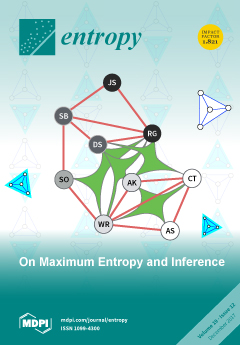We study spatial scaling and complexity properties of Amazonian radar rainfall fields using the Beta-Lognormal Model (BL-Model) with the aim to characterize and model the process at a broad range of spatial scales. The Generalized Space
q-Entropy Function (GSEF), an entropic measure defined as a continuous set of power laws covering a broad range of spatial scales,
, is used as a tool to check the ability of the BL-Model to represent observed 2-D radar rainfall fields. In addition, we evaluate the effect of the amount of zeros, the variability of rainfall intensity, the number of bins used to estimate the probability mass function, and the record length on the GSFE estimation. Our results show that: (i) the BL-Model adequately represents the scaling properties of the
q-entropy,
, for Amazonian rainfall fields across a range of spatial scales
from 2 km to 64 km; (ii) the
q-entropy in rainfall fields can be characterized by a non-additivity value,
, at which rainfall reaches a maximum scaling exponent,
; (iii) the maximum scaling exponent
is directly related to the amount of zeros in rainfall fields and is not sensitive to either
the number of bins to estimate the probability mass function or
the variability of rainfall intensity; and (iv) for small-samples, the GSEF of rainfall fields may incur in considerable bias. Finally, for synthetic 2-D rainfall fields from the BL-Model, we look for a connection between intermittency using a metric based on generalized Hurst exponents,
, and the non-extensive order (
q-order) of a system,
, which relates to the GSEF. Our results do not exhibit evidence of such relationship.
Full article






